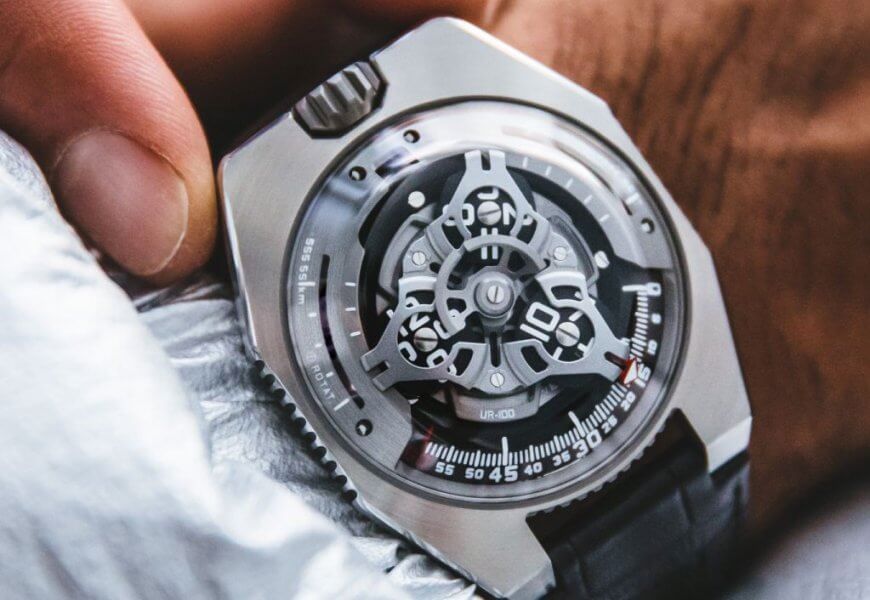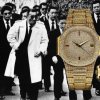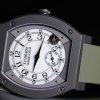TRACKING THE EARTH AS IT SPINS AND FLIES THROUGH SPACE AND TIME
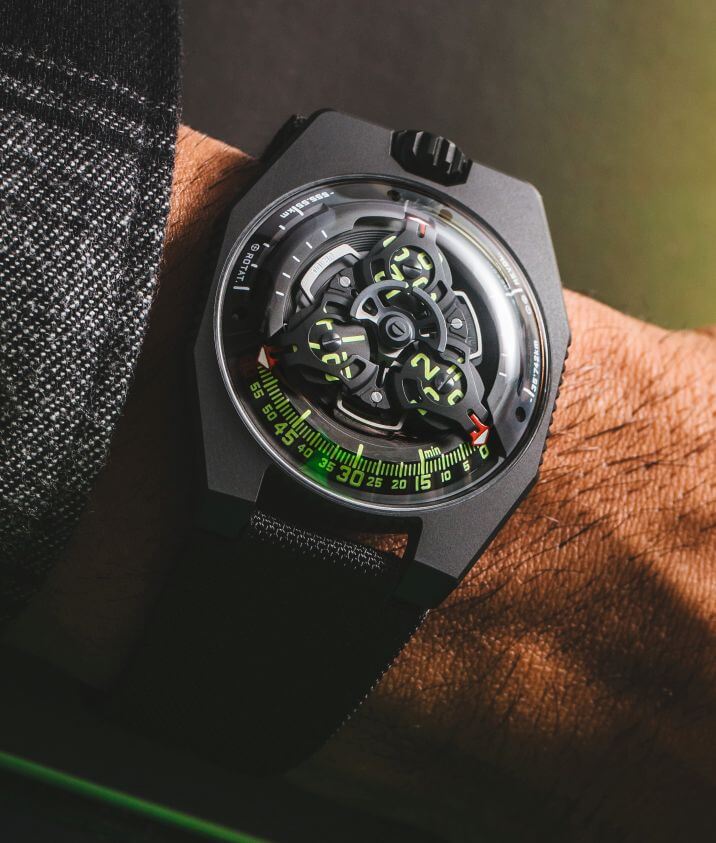
The UR-100 takes us on a journey through both time and space, two concepts at the very core of URWERK. Using its orbiting satellite hours and minute hands, the UR-100 displays both time (hours and minutes) and space (distance travelled), merging these two concepts in the creation of the all-new UR-100 SpaceTime.
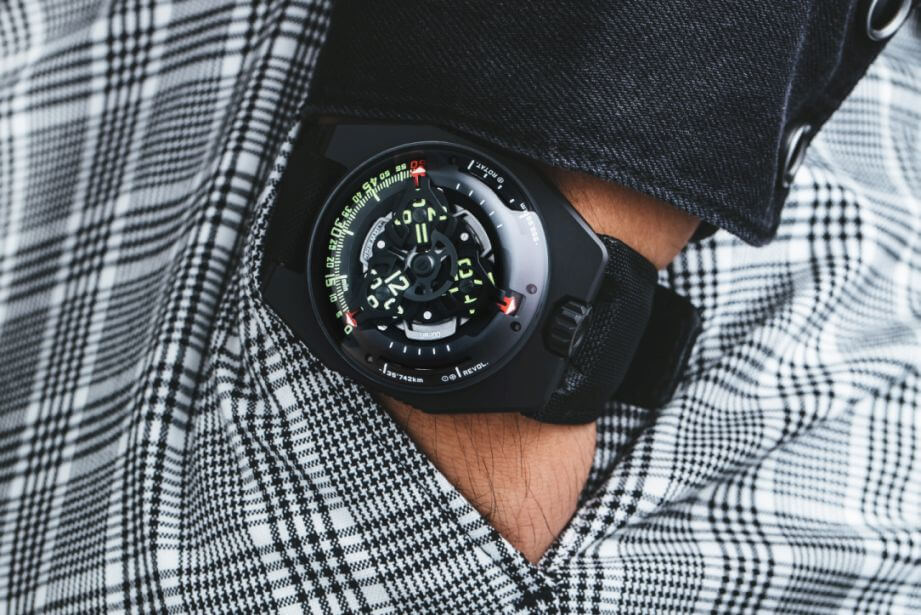
The UR-100 SpaceTime features URWERK’s iconic orbital hour satellites, differing however in one significant way. Rather than the red-arrow-tipped minute pointers on the hour satellites disappearing after 60 minutes when replaced by the next, the UR-100 minute arrow passes beneath and between subsidiary dials, reappearing to display intriguing new astronomical indications: distance travelled on Earth and distance travelled by Earth.
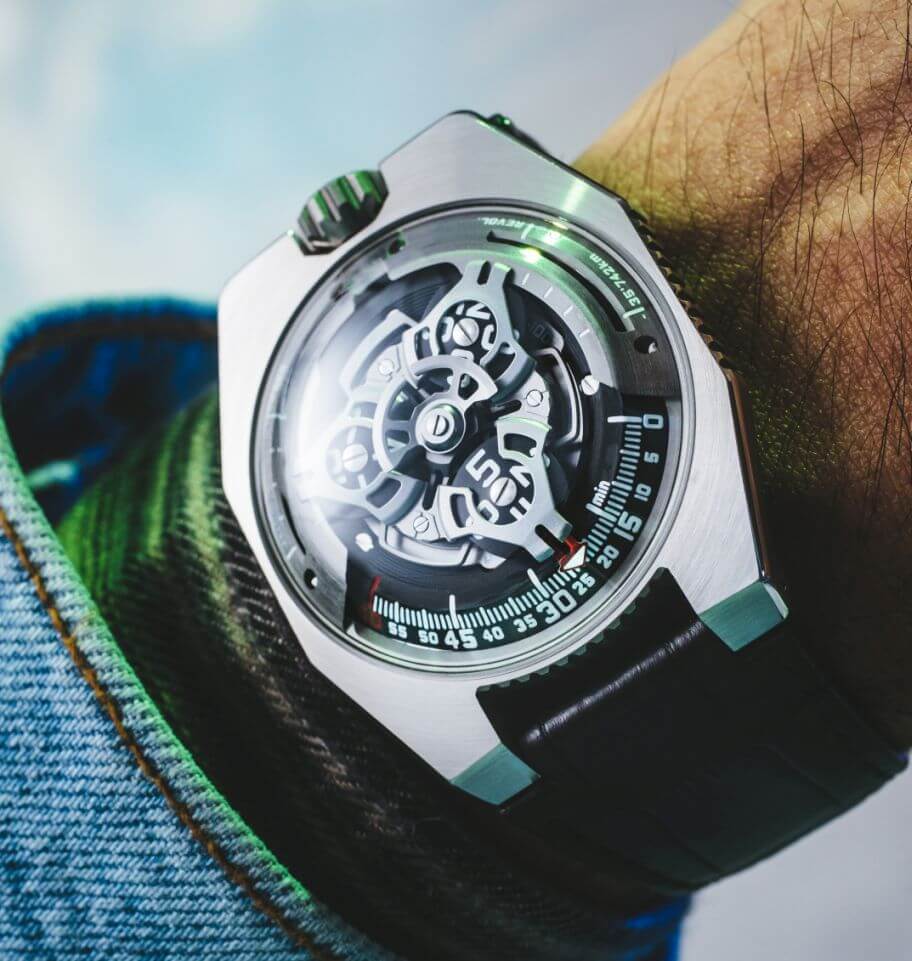
Distance travelled on Earth
The first indicator at 10 o’clock evaluates the distance in kilometers that we have travelled on the Earth without even leaving our desks! It is based on the average speed of the rotation of the Earth on its axis at the equator, covering a distance of 555 km every 20 minutes.
Distance travelled by the Earth around the sun
Directly opposite at 2 o’clock, the same hand (well it looks like the same hand, but is actually one of three) continues its journey to another celestial indication featuring the distance the Earth has travelled in its orbit around the sun a journey spanning some 35,740 km every 20 minutes.
The UR-100 simultaneously presents three different space-time realities, providing a thought-provoking reminder of our voyage through time and space.
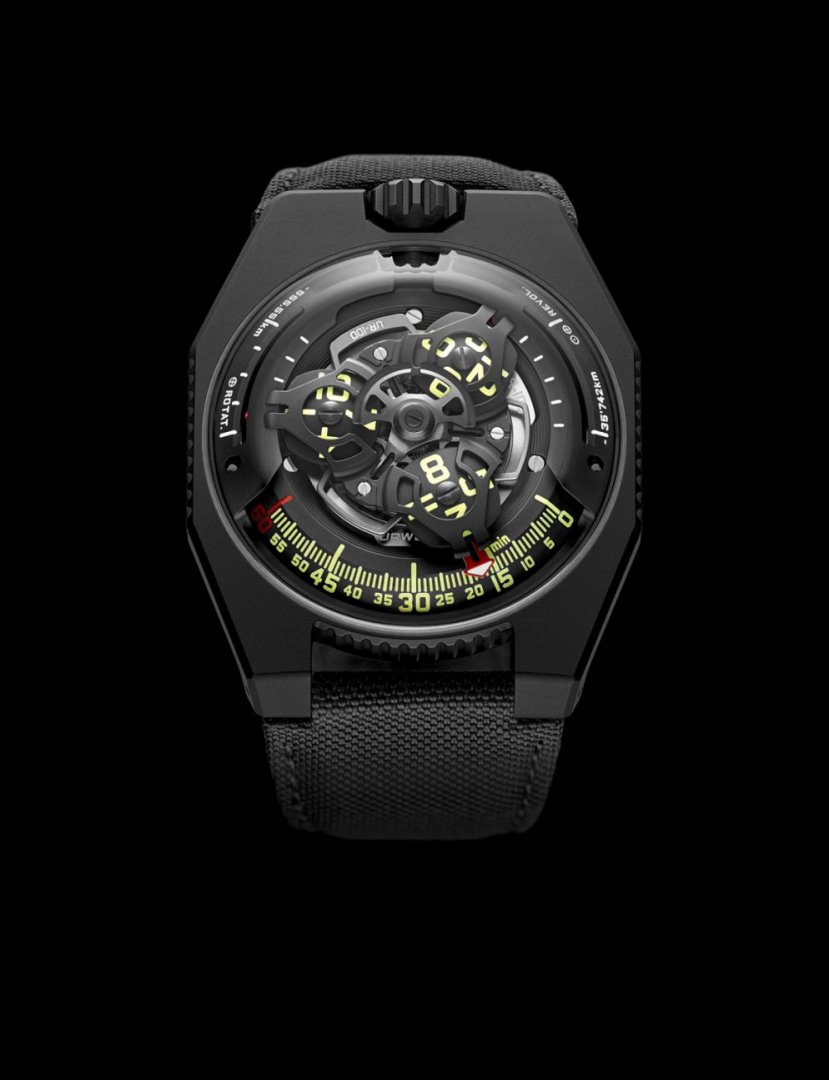
“For me, watches have a philosophical dimension. They are a physical and abstract reproduction of our situation on Earth, with the dial representing the equator, simultaneously in constant motion while seemingly stationary for us,” says Martin Frei, chief designer and co-founder of URWERK.
Felix Baumgartner, master watchmaker and the other co-founder of URWERK agrees: “We live in a universe governed by three dimensions — time, rotation, and orbit — that we attempt to measure and master, but what escapes us is this notion of spacetime.”

Caliber 12.01
Powering the UR-100 SpaceTime is the automatic Caliber 12.01, with baseplates in ARCAP and a power reserve of 48 hours. The automatic winding rotor is regulated by a flat turbine, the Windfäng (Swiss German for “air trap”) that minimizes shocks to the rotor bearing and reduces over-winding and wear and tear. The rotor, which is partially supported on its periphery by the flat turbine, also has a larger diameter, resulting in a lower mass and therefore less wear.
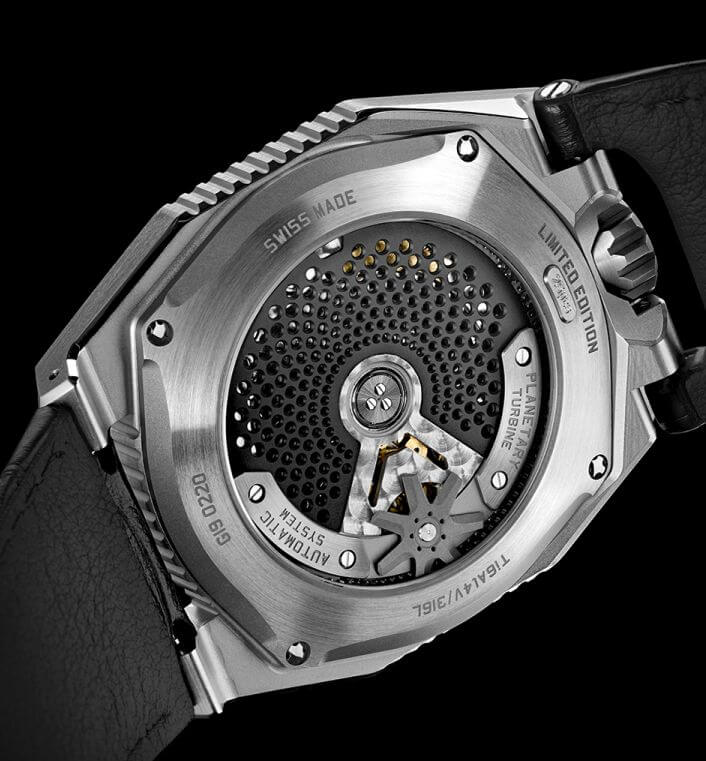
In-house testing of the flat turbine rotor regulation system found that it provided significant and exponential protection against excessive rotor speeds (the Windfänger rotates six times for every rotation of the winding rotor).
The design and construction of the URWERK Caliber 12.01 required incredibly high precision because of the extremely tight tolerances between the minute hand and three different dials and domed sapphire crystal it passes between.

The shape of the case may remind URWERK aficionados of the aesthetics of the brand’s early watches. As Martin Frei explains, “Towards the end of the 90’s, we unveiled the UR-101 and UR-102, the UR-100 is a little like our ‘Back to the Future.’ We broke down our approach and used some of the original design elements of our early constructions. The case of the UR-100 is a deconstruction of an early URWERK case. The steel dome of our historic models is reproduced in sapphire crystal. The form is emphasized by the titanium and steel case. I constantly question the diktat of symmetry and played with proportions to catch the eye.”
Genesis
The URWERK UR-100 was inspired by a nineteenth-century pendulum clock — a present to Felix Baumgartner from his father Geri, a now-retired renowned clock restorer — made by Gustave Sandoz for the 1893 World’s Fair in Chicago.
The regulator-style dial does not show time. Instead it shows the distance of the Earth’s rotation at the equator. The extra-long pendulum beats every 2.16 seconds, making every oscillation one kilometer. The main dial has a scale of 10,000 kilometers, shown in units of 100 kilometers, so that each tick (half oscillation) indicates 500 meters traveled on the Earth’s surface (at the equator). The top subdial (10 km) is divided into 10 units, while the lower subdial showing a total of 40,000 km — approximately the equatorial circumference of the Earth — is divided into increments of 1,000 km.
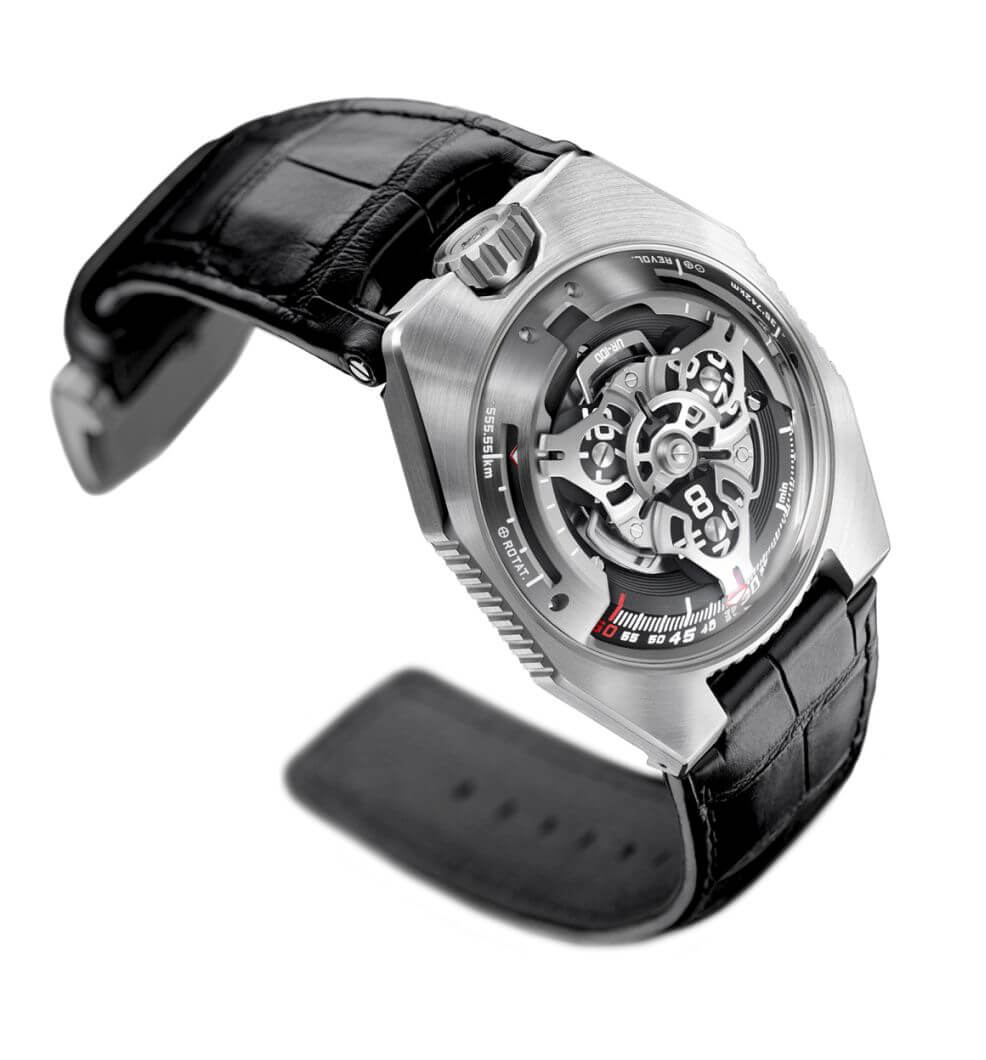
Technical Specifications:
The case, in stainless steel, or in black PVD titanium and steel, measures 41mm x 49.7mm x 14mm. It has a sapphire crystal and it is water resistant to 30 meters.

Movement is the Swiss automatic Urwerk in-house caliber UR 12.01 with 39 jewels, 28,800 vph and a power reserve of 48 hours. Movement governed by low-profile planetary turbine minimizing over-winding and wear. Orbital satellite hours turning on Geneva crosses in beryllium bronze; open-worked aluminum carousel; triple baseplates in ARCAP. It features circular graining, sanding, brushing. Chamfered screw heads. Functions are: Orbital hours; minutes, distance travelled on Earth’s equator in 20 minutes, distance Earth travels around the sun in 20 minutes.
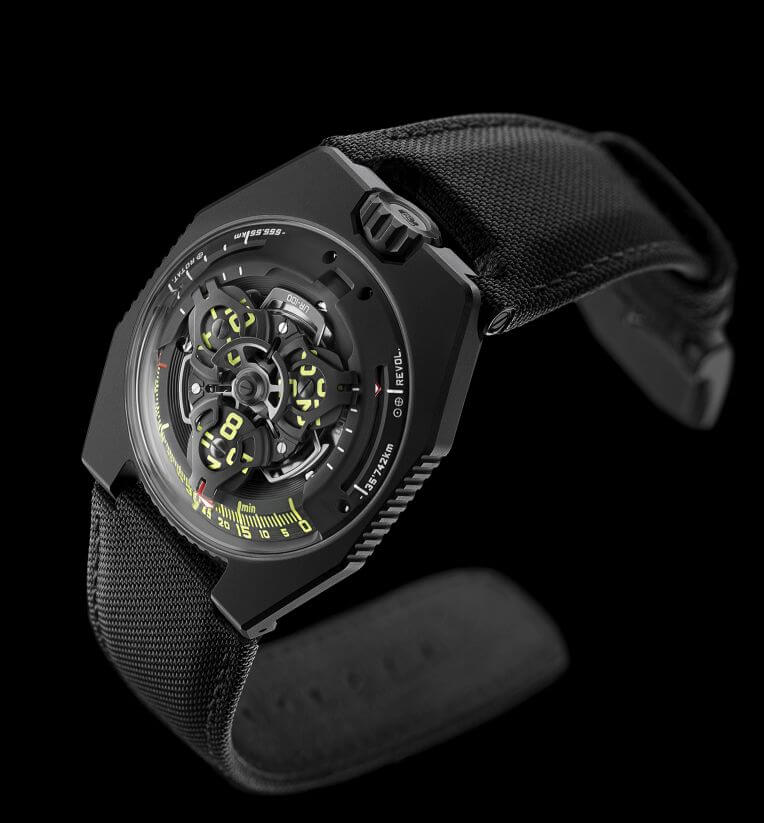
Hour and minute indications in SuperLuminova.
It comes on a black alligator leather or technical nylon strap with matching metal buckle.
MSRP is 48,000 Swiss Francs for limited edition of 25 pieces each.

